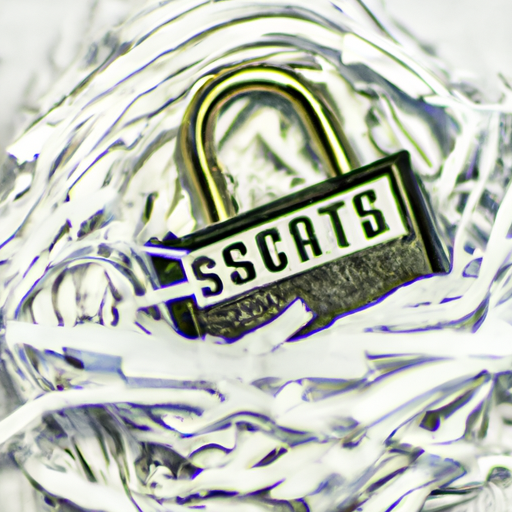How Do Attackers Use The Typosquatting Technique?
Have you ever mistyped a website URL and ended up on a different page? Well, you may have unknowingly fallen victim to a technique called Typosquatting. This article explores the various ways attackers take advantage of typos made by internet users to trick them into visiting malicious websites. By creating domains that are intentionally similar to popular websites, these attackers capitalize on users’ mistakes to steal sensitive information or spread malware. Stay tuned to find out more about how this technique is used and how to stay protected from it.
What is Typosquatting?
Typosquatting is a deceptive tactic used by cyber attackers to take advantage of human error and capitalize on common typing mistakes. In this technique, attackers register domain names that are very similar to popular websites, with the intention of tricking unsuspecting users into visiting these malicious sites. By exploiting typos and misspellings, attackers create a false sense of familiarity with the intent to deceive users and gain access to their personal information, account credentials, or spread malware.
Definition
Typosquatting, also known as URL hijacking or brandjacking, is a method whereby attackers register domain names that closely resemble legitimate websites. This technique involves deliberately misspelling or adding/subtracting characters to popular domain names in order to lure users into visiting malicious sites.
Purpose
The ultimate goal of typosquatting attacks is to trick users into believing they have reached a legitimate website. By mimicking the appearance and functionality of renowned websites, attackers aim to deceive users into sharing sensitive information or inadvertently downloading malware. This deceptive tactic allows attackers to exploit human errors to their advantage.
Types of Typosquatting Attacks
Direct Typosquatting
Direct typosquatting refers to the act of registering domain names with slight typographical errors. By intentionally inserting or omitting a letter or a character that closely resembles the original domain, attackers create a deceptive resemblance to fool users into thinking they have reached the legitimate website.
Reverse Typosquatting
Reverse typosquatting is a technique where attackers register domain names that are slightly different from trademarked brand names. In this case, the attackers aim to trick users who mistakenly type a brand name but omit a character. This allows attackers to target a specific brand and potentially exploit users who unintentionally mistype the domain name.
Bitflipping
Bitflipping typosquatting is a sophisticated technique that exploits bit-level differences between characters on computer keyboards. Attackers intentionally register domain names in which a single character is strategically replaced with another character that appears similar when viewed on a computer keyboard. This technique exploits the visual similarity and proximity of the intended and replaced characters on the keyboard to deceive users.
Homoglyphs
Homoglyph typosquatting leverages characters from different character sets that closely resemble one another visually. Attackers exploit this similarity to register domain names that resemble legitimate websites. For example, attackers might replace an “o” in a domain name with a visually similar character from a different character set to create a deceptive resemblance.
Combo-squatting
Combo-squatting combines typosquatting with other deceptive tactics. This technique involves registering domain names that combine a brand name or popular term with an unrelated keyword. The goal is to trick users into believing they have reached a legitimate website by incorporating keywords that are related to the user’s search or intended destination.
Identifying Vulnerable Targets
Popular Websites
Attackers frequently target popular websites that attract a large number of users. Websites such as social media platforms, online retailers, and popular search engines are prime targets for typosquatting attacks due to their widespread usage and high traffic volume.
High-traffic Websites
High-traffic websites have a higher likelihood of attracting unsuspecting users and provide cyber attackers with a larger pool of potential victims. By imitating these websites, attackers increase their chances of success in exploiting user errors and gaining access to sensitive information.
Brand-name Domains
Brand-name domains are often targeted by typosquatting attacks. Attackers capitalize on the recognition and trust associated with renowned brands to deceive users who mistype the brand’s domain name. By mimicking a brand-name website, attackers can trick users into sharing personal information or downloading malicious content.
Regional and Local Businesses
While popular and global websites are common targets, regional and local businesses are also vulnerable to typosquatting attacks. Attackers may prey on local businesses by registering domains similar to their official websites and targeting users who are familiar with the business’s name but unknowingly make typographical errors when entering the domain.
Obtaining Lookalike Domains
Typo Research
Attackers conduct careful research to identify common typos and misspellings users often make when entering domain names. By analyzing commonly mistyped characters or misspellings, attackers can create domain names that closely resemble legitimate websites and increase their chances of success in deceiving users.
Purchase or Registration
Once attackers have identified potential domain names, they register them with domain registration services or purchase them from existing domain owners. Attackers may use fraudulent information or third-party services to hide their identity during the registration process, making it more challenging to track their activities.
Abandoned Domains
Attackers may also take advantage of abandoned or expired domain names. By monitoring domain expiration dates, attackers can identify domains that are not renewed and quickly register them to use in their typosquatting campaigns. This allows attackers to benefit from the reputation and traffic that the previous legitimate domain may have had.
Setting Up Malicious Websites
Hosting Platforms
Attackers typically use various hosting platforms to host their malicious websites. These platforms provide the infrastructure needed to deliver the content to unsuspecting users. By utilizing hosting services, attackers can ensure the availability and stability of their websites while avoiding drawing attention to their activities.
Website Content
To deceive users effectively, attackers create websites that closely resemble the legitimate ones they are impersonating. They replicate the visual appearance, layout, and content of the target website, making it difficult for users to detect any discrepancies. By creating a convincing replica, attackers increase the chances of users interacting with their malicious site.
Creation of Legitimate Appearance
Attackers go to great lengths to create a legitimate appearance for their malicious websites. They craft professional-looking logos, use convincing domain names that mimic the target website, and may even include fake security seals or certificates to appear trustworthy. These tactics aim to instill a false sense of security and credibility in users.
Exploiting User Mistakes
Typoed URLs
One of the most common ways attackers exploit user mistakes is through typoed URLs. Users who inadvertently misspell or mistype a domain name may end up on a typosquatting website that closely resembles the intended destination. Attackers rely on human error and expect users to overlook minor differences in the domain name.
Email Addresses
Attackers also exploit user mistakes made in email addresses. By registering domain names that closely resemble popular email services or organizations, attackers can trick users into sending sensitive information or credentials to their malicious email addresses. Users who mistakenly type the recipient’s email address can unknowingly fall victim to these types of attacks.
Search Queries
Another method attackers use to exploit user mistakes is through search queries. By creating websites with domain names that contain commonly misspelled search terms, attackers aim to appear in search results when users make typos or errors in their searches. These malicious sites mimic the appearance of legitimate search results, tricking users into clicking on them.
Social Media Handles
Attacks can also occur through social media handles. Attackers create accounts that have usernames similar to popular businesses, brands, or individuals. By impersonating well-known entities, attackers can deceive users who mistakenly interact with their fake profiles, potentially leading to the compromise of personal information or account credentials.
Methods for Delivering Attacks
Phishing
Phishing attacks are a common way for attackers to exploit typosquatting. Attackers send deceptive emails, messages, or notifications that direct users to malicious websites designed to trick them into divulging sensitive information such as usernames, passwords, or credit card details. These phishing attacks often rely on the element of surprise, urgency, or enticing offers to manipulate users into taking the desired actions.
Malware Distribution
Attackers may use typosquatting to distribute malware. By luring users to visit their malicious websites, attackers can exploit vulnerabilities in users’ systems or deceive them into downloading infected files. Once the malware is installed, attackers gain unauthorized access to users’ devices, potentially leading to data breaches, identity theft, or financial losses.
Credential Theft
Typosquatting attacks can also be used to steal user credentials. Attackers create deceptive login pages that closely resemble legitimate websites, tricking users into entering their usernames and passwords. These stolen credentials can then be used by attackers to gain unauthorized access to various accounts, leading to potential financial loss, identity theft, or reputation damage.
Drive-by Downloads
Drive-by downloads occur when users visit a malicious website and unintendedly download malicious software onto their devices. Attackers can use typosquatting to redirect users to websites that exploit vulnerabilities in their browsers or operating systems, enabling the automatic download and installation of malware. Drive-by downloads can result in the compromise of personal information, data loss, or system malfunctions.
Implications and Impact
Financial Losses
Typosquatting attacks can result in significant financial losses for both individuals and businesses. Users who fall victim to phishing attacks may unknowingly provide their financial information to attackers, leading to unauthorized transactions or stolen funds. Additionally, businesses that fall prey to typosquatting attacks may experience loss of customers, revenue, or incur expenses related to reputation management and legal actions.
Reputation Damage
For businesses and individuals, falling victim to typosquatting attacks can have severe reputation consequences. Attackers can use their malicious websites to tarnish the reputation of legitimate businesses, spread false information, or engage in fraudulent activities. Once a reputation is damaged, it can be challenging to regain trust and restore credibility among customers and partners.
Data Breaches
Typosquatting attacks can also result in data breaches, particularly when attackers exploit users’ mistakes in entering their usernames and passwords. Stolen credentials can provide unauthorized access to sensitive data, such as personal information, financial records, or trade secrets. Data breaches can have long-lasting implications, including legal consequences, financial penalties, and loss of customer trust.
Identity Theft
By tricking users into entering their personal information on malicious websites, typosquatting attacks can facilitate identity theft. Attackers can use the stolen information to assume the identity of their victims, commit fraudulent activities, or impersonate the victims for further malicious purposes. Identity theft can have devastating consequences for individuals, directly impacting their finances, creditworthiness, and overall well-being.
Detection and Prevention
Domain Monitoring
Regular domain monitoring is crucial for detecting typosquatting attempts. Organizations and individuals should monitor new domain registrations that resemble their brand or domain name. By actively tracking and investigating potential typosquatting domains, they can take appropriate actions to protect their reputation and users.
Regular Audits
Regular audits of websites and digital assets are essential to identify any signs of typosquatting. Organizations should review their online presence, check for any unauthorized or malicious domain names, and analyze web traffic patterns. By conducting these audits, organizations can proactively identify and address any potential threats stemming from typosquatting attacks.
User Education
User education plays a vital role in preventing and mitigating the impact of typosquatting attacks. Individuals should be educated on how to identify typosquatting attempts, recognize signs of phishing, and exercise caution when sharing personal information or clicking on unfamiliar links. By empowering users with knowledge and awareness, they become a less attractive target for attackers.
Anti-Typosquatting Tools
There are several anti-typosquatting tools available that can help organizations detect and prevent typosquatting attacks. These tools utilize advanced algorithms and machine learning techniques to identify potential typosquatting domains, monitor web activities, and provide alerts for suspicious or malicious behavior. Implementing such tools can significantly enhance an organization’s defense against typosquatting attacks.
Conclusion
Typosquatting attacks continue to pose a significant threat to individuals, businesses, and the security of the internet as a whole. By exploiting common typing mistakes and human errors, attackers can deceive users, steal sensitive information, spread malware, or tarnish the reputation of legitimate organizations. Understanding the different types of typosquatting attacks, identifying vulnerable targets, and implementing proactive prevention measures are essential in safeguarding against these malicious tactics. By combining domain monitoring, regular audits, user education, and the use of anti-typosquatting tools, individuals and organizations can strengthen their defenses and minimize the impact of typosquatting attacks.








